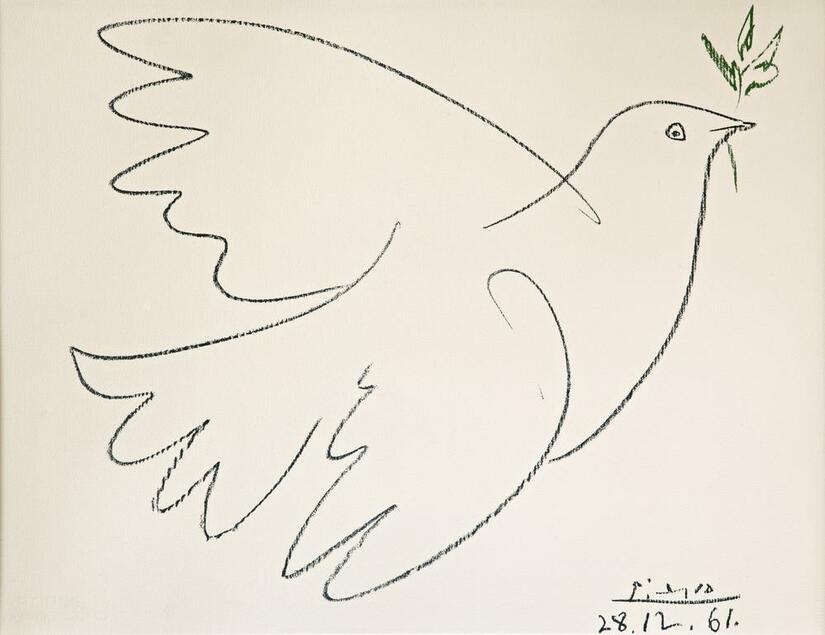Pablo Picasso: Friedenstaube, 1961 (Dove of Peace)

Print, 102 x 82 cm
World Peace Congress, World Peace Prize and the Dove of Peace by Picasso - they belong together: For the 1949 World Peace Congress, the Spaniard Pablo Picasso developed the depiction of a dove, for which he received the World Peace Prize in 1955. Since then, this picture has stood for the peace movement worldwide and for peace in general, and of course it must not be missing at the Europäische Akademie Otzenhausen. Even in pre-biblical times, the dove was considered a symbol of peace. In 1949 Picasso not only took up this motif again for the design for the World Peace Congress, but also used it for other works – like the one on display.
Pablo Picasso (*1881 in Málaga, Spain, †1973 in Mougins, France) is at the top of the list of great artists of the last century, and many consider him a genius. As co-founder of Cubism, he influenced an entire generation of artists. Picasso was a painter, graphic artist, sculptor, ceramist and poet, whose total work is estimated at 50,000 pieces. Before he turned to Cubism, he went through a more representational creative phase ("Blue Period", "Pink Period"). From 1925, he also took part in exhibitions of the Surrealists. This art form opened up the possibility for him to encode and mythically exaggerate thoughts and experiences and further increased the expressiveness of his works. The famous anti-war work "Guernica" from 1937 (see also Flavio Scholles' "Search for the Roots" at the academy) is considered the crowning achievement of this phase. Even though he was not primarily a "political" painter, his depictions of the dove of peace bear witness to a clear stance for peace.